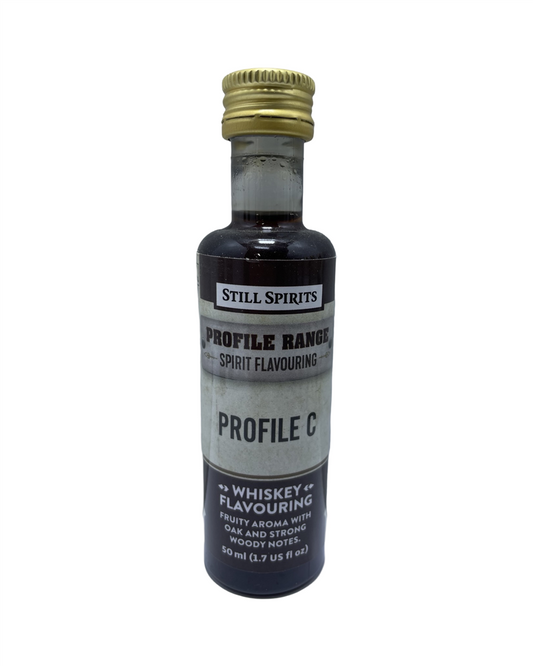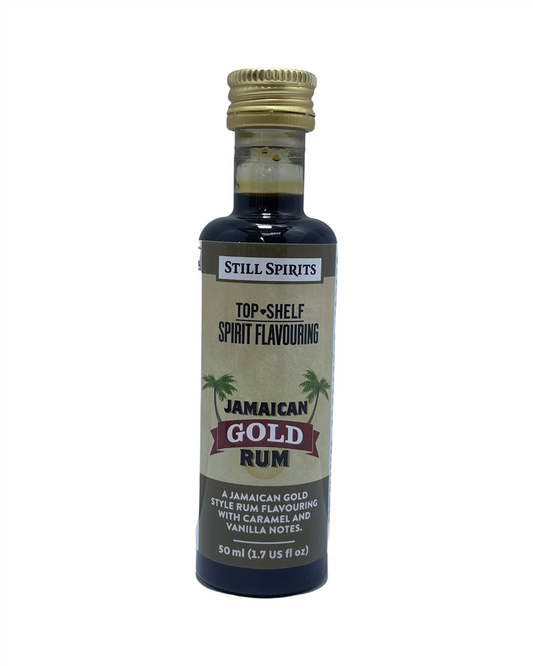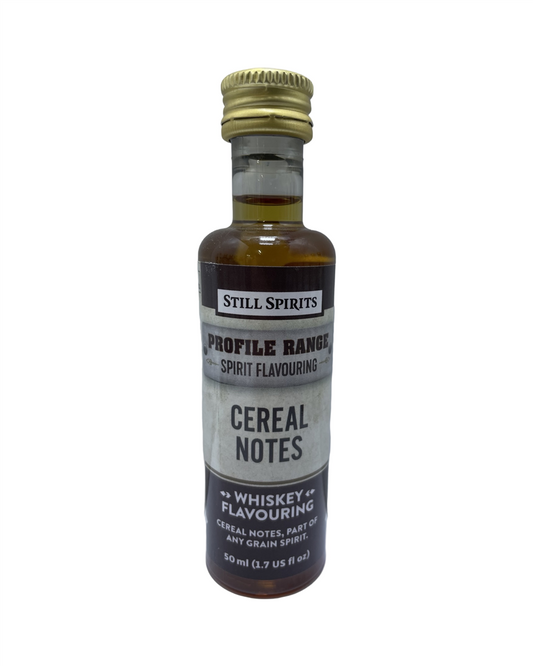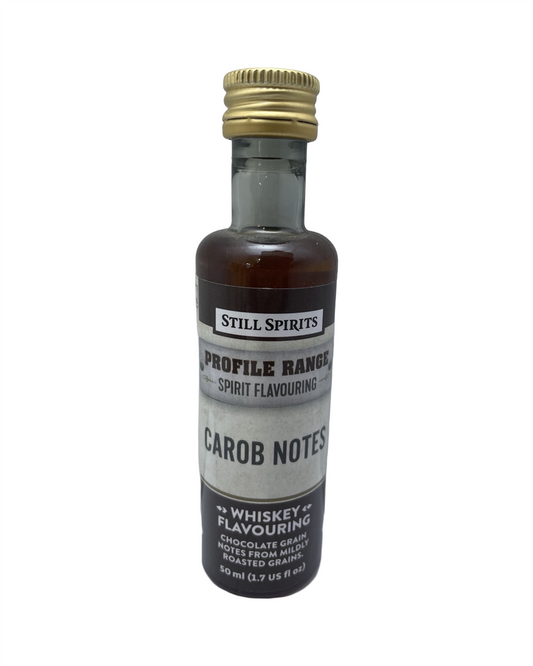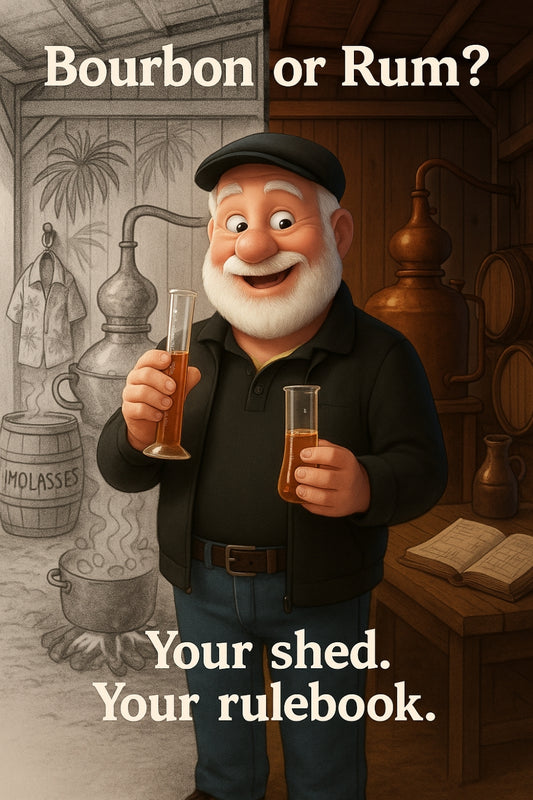Still Spirits fans know this—your ‘whiskey’ might be lying to you. Is it really?
Share
What Makes a Whiskey a Bourbon, Scotch or Rye? It’s Not Just the Accent
Crack open a bottle labelled “whiskey” and the story doesn’t stop there — it starts. Each style carries not just flavour, but identity: where it was made, how it was made, and what rules it followed. This isn’t a one-size-fits-all deal. It’s more like three mates arguing over who’s got the best firewood for their backyard smoker — and they all make a decent case.
Different Names, Different Games
Let’s get the basic distinction out of the way:
- Bourbon: Born in the USA and made mainly from corn
- Scotch: Proudly Scottish and made from malted barley
- Rye: The bold one, made with at least 51% rye grain
Same idea — fermented grain mashed up, distilled, and barrel-aged — but the ingredients, regions, and rules make all the difference. And yes, the spelling matters. The Irish and Americans favour “whiskey”; the Scots drop the “e” and go with “whisky.”
Bourbon: America’s Sweet, Corn-Fed Classic
If whiskey were a hearty BBQ platter, bourbon would be the slow-cooked brisket — warm, sweet, and impossible to dislike when done well. By law, bourbon must:
- Be made in the United States
- Contain at least 51% corn in its mash bill
- Be aged in brand-new, charred oak barrels
- Enter the barrel at no more than 62.5% ABV
That high corn content gives bourbon its signature sweetness — think vanilla, caramel, even a touch of maple. And because it’s aged in brand-new barrels (never used before), there’s a smooth smokiness you don’t get in other styles. It’s no surprise many home distillers start here. Sweet, approachable, and a forgiving first batch if your cuts are decent.
“Using 100% charred oak barrels changed everything for my bourbon. It mellowed like magic.”
— Candeece, Homebrew Lead at Strathalbyn H Hardware
Scotch: The Earthy, Peaty Grandfather of Whisky
For whisky with a bit of get-off-my-lawn attitude, look to Scotland. Scotch must:
- Be made in Scotland (obviously)
- Use malted barley as the primary grain
- Be aged in oak barrels for at least three years
The character depends so much on the region. Islay scotches are famous for being smokier than a bushfire thanks to peat-fuelled malting fires. Highland and Speyside styles are smoother and a bit sweeter — great if you’re not ready to wrestle with coastal brine just yet.
Unlike bourbon, Scotch involves used barrels — often ex-bourbon or sherry — which add layers of complexity. You’ll taste spice, dried fruit, leather, even salt. This is the spirit that ages gracefully, like your uncle’s motorbike jacket.
“My first peated Scotch batch punched like a campfire to the face — now I crave it.”
— Regular Customer Feedback
Rye: Full-on Flavour with a Peppery Kick
Then there’s rye. If bourbon is smooth and Scotch is complex, rye turns up the grit. To be considered a rye whiskey (in the US):
- The mash must be at least 51% rye grain
- It must be aged in new charred oak barrels
Rye is spicy — not in the chilli sense, but like fresh-cracked black pepper and Christmas cloves. It’s leaner, drier, more aggressive on the palate. Some say rye is how whiskey used to taste before corn barged in and sweetened the pool.
Not everyone’s cup of tea — but if you like it, you really like it.
Why This Matters for Home Distillers
Understanding these styles isn’t just pub trivia. It helps you craft spirits with intent. Want a vanilla-rich bourbon for sipping on summer nights? Start with corn-heavy grain bills and stick to fresh oak. Chasing smoky depth to pair with smoked brisket? Malted barley and a touch of peat will take you there.
The barrel matters. The grain matters. But it’s your choices — in mash, in cuts, in ageing — that write your whiskey’s story.
One Spirit, Many Paths
At a glance, the difference between these whiskeys seems like a small tweak. But they each hit a different part of the map — geographically and in flavour. Bourbon’s that warm backyard hug. Scotch is your deep-thinking mate who listens to vinyl by firelight. Rye’s the one doing burnouts in the ute paddock while everyone else plays by the rules.
And here’s the kicker: it’s not about copying these styles to the letter. It’s about using them as a launch pad to make something that’s yours.
“You can start with a bourbon base but age it like a Scotch — mash rules shouldn’t limit your creativity.”
— Candeece
The Final Pour
In the end, the difference isn’t just in the grain or the barrel — it’s in the bragging rights. When you bottle your batch, you’re not just making spirit. You’re adding your fingerprint to a tradition that’s been argued over across continents for generations.
So whether you lean smooth, smoky, or spicy — make it bold, make it yours, and make it something worth pouring twice.
Cheers,
Candeece

Stay Connected
Join our homebrewing community: Beer and Barrel Society on Facebook
Follow our Facebook Page: Strathalbyn H Hardware on Facebook

